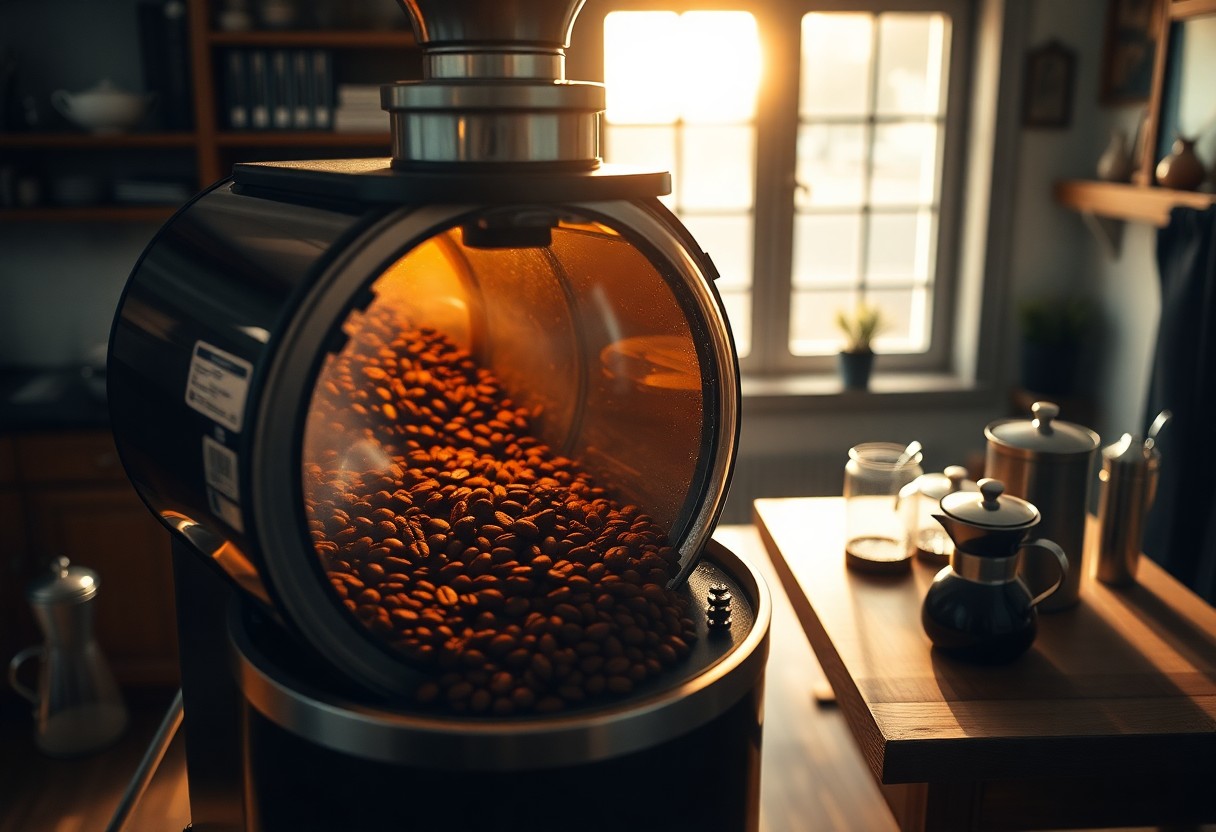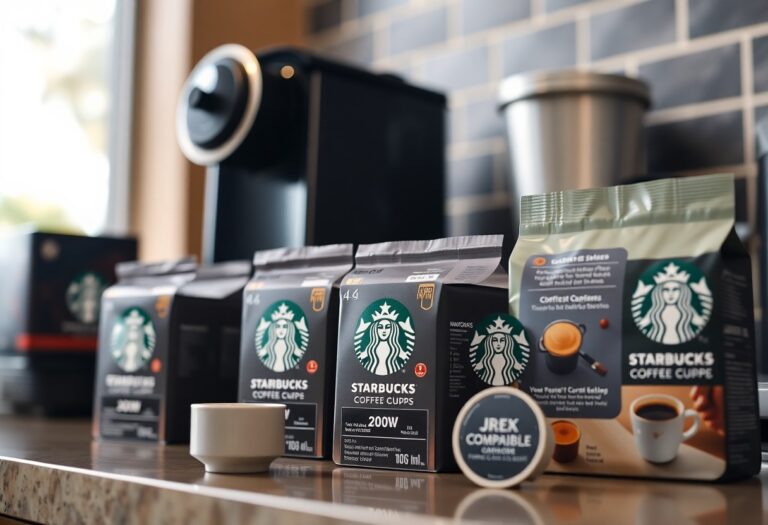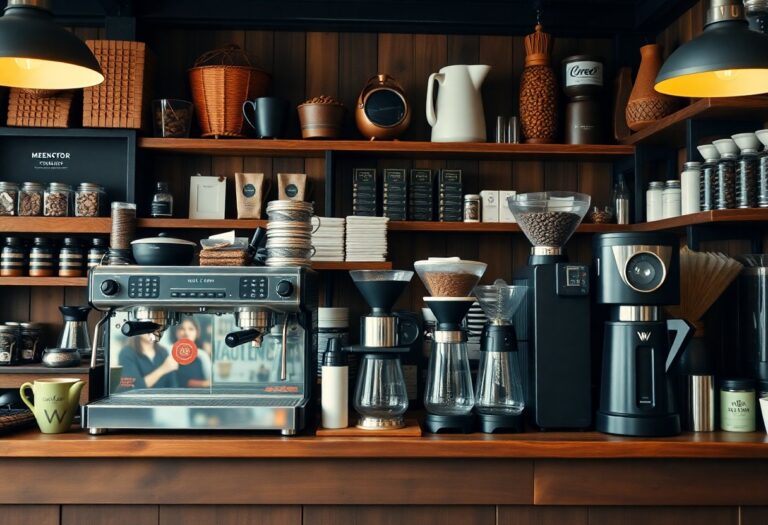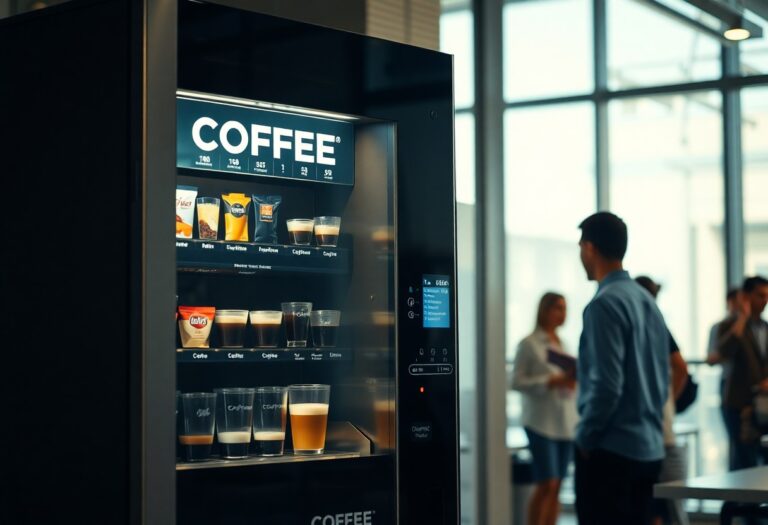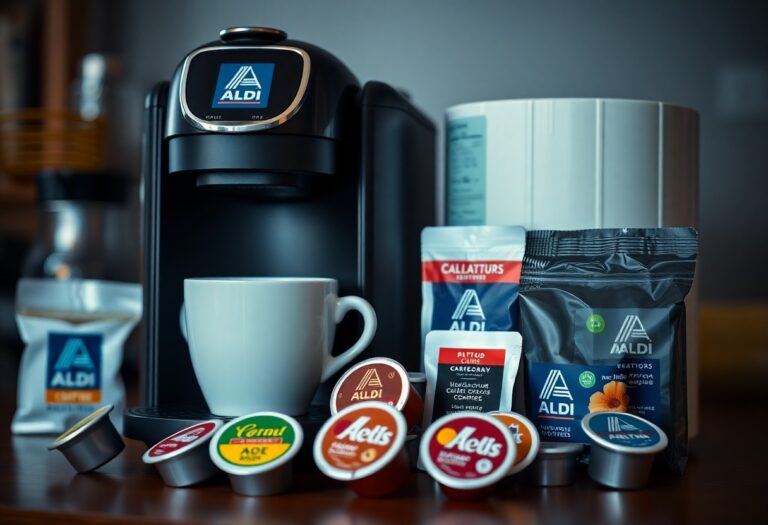What is the Best Coffee Roasting Machine – Home Roasting
Most coffee enthusiasts know that roasting your own beans can elevate your morning brew to new heights. With the right coffee roasting machine, you can explore a world of flavors and aromas tailored to your taste. However, choosing the best one for your needs is vital, as the wrong machine can lead to inconsistent results or even burnt beans. In this guide, we will explore various options, highlighting features, advantages, and potential drawbacks to help you make an informed choice for your home roasting adventure.
Key Takeaways:
- Consider the type of roasting method: drum roasters provide uniformity, while air roasters offer quick roasting times.
- Look for machines with adjustable temperature and time settings to achieve desired roast levels.
- Capacity matters; choose a roaster that fits your volume needs, whether for personal use or batch roasting.
- Evaluate ease of use and cleaning, as some machines are more user-friendly and require less maintenance.
- Read reviews and consider brand reputation to ensure you select a reliable coffee roasting machine.
The Science of Coffee Roasting
Understanding the science of coffee roasting opens up a captivating world of flavor and aroma. The roasting process transforms green coffee beans into the fragrant, brown beans that you recognize. Various factors, including temperature, time, and moisture, play pivotal roles in how your coffee develops its unique characteristics. Each stage of roasting—light, medium, or dark—yields distinct taste profiles, allowing you to experiment and find your perfect cup.
Chemical Changes During Roasting
As beans roast, a series of chemical reactions occur, known as Maillard reactions. These reactions involve sugars and amino acids creating new flavors and aromas, contributing to the complexity of your coffee. Furthermore, the beans lose moisture, leading to an increase in density and changes in acidity, which ultimately affect the final taste experience.
Impact of Roast Profiles on Flavor
Your choice of roast profile significantly influences the flavors in your cup. Light roasts tend to preserve the unique characteristics of the bean’s origin, often highlighting fruity, floral notes. Conversely, medium roasts strike a balance, developing sweeter, chocolatey flavors while still maintaining some origin notes. Dark roasts bring out a richer body, often masking the original bean’s flavors, allowing for bold, smoky, and bitter undertones. Each profile offers an entirely different experience, inviting exploration to find which best suits your palate.
A typical light roast might highlight bright citrus notes, making it an excellent choice for coffee drinkers seeking a vibrant cup. On the other hand, a dark roast can reveal deep, earthy flavors that complement cream and sugar. Adjusting the roast time even slightly can shift the flavor balance dramatically, so experimenting with different profiles allows you to discover the myriad expressions of coffee and refine your brewing technique to your personal liking.
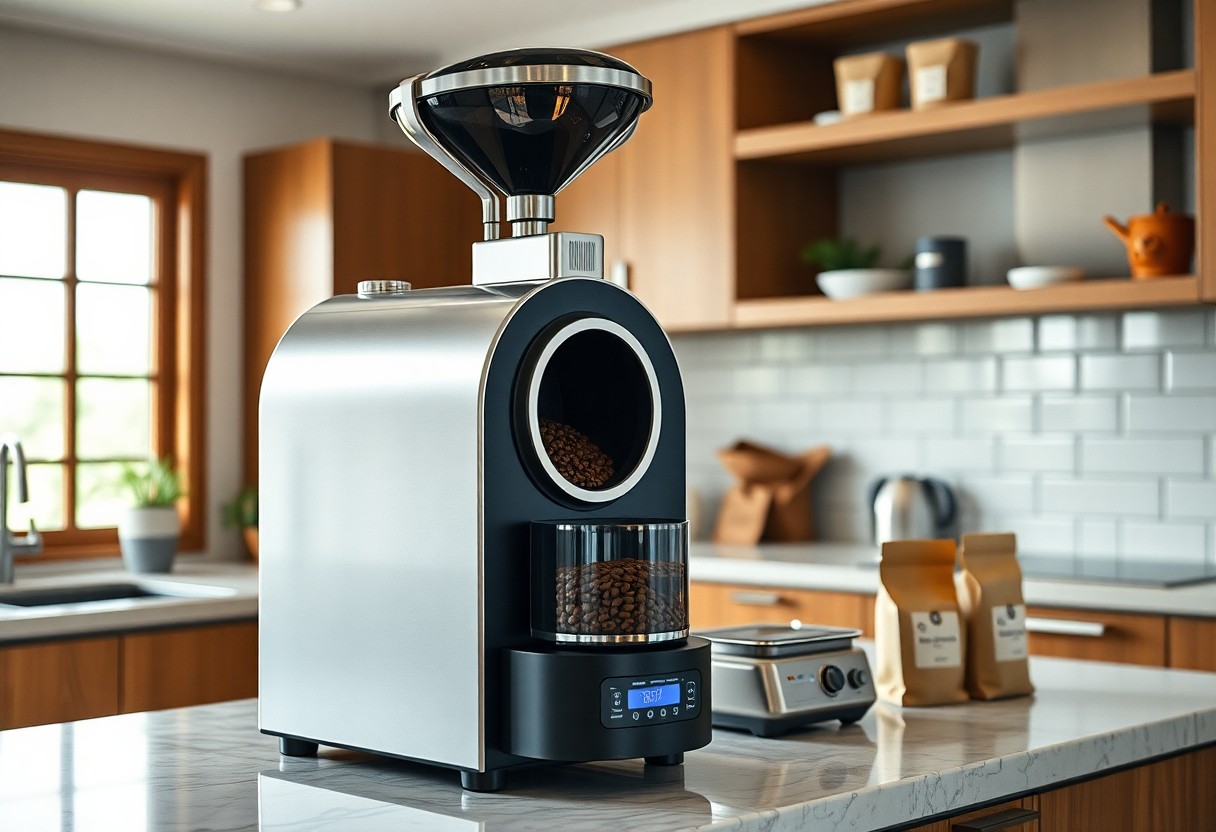
Evaluating Home Coffee Roasters: Key Features That Matter
When dicking out a home coffee roaster, understanding the key features will help you make an informed decision. Look for models that offer precise control over roast times and temperatures, as well as consistency in the roasting process. Other notable features include the capacity to handle various bean sizes, ease of clean-up, and noise levels during operation. Consider the following list of vital features:
- Temperature control: Allows for tailored roasting profiles.
- Roaster capacity: Important for batch sizes you typically roast.
- Durability: Look for high-quality materials that withstand repeated use.
- Cooling features: Essential for halting the roasting process efficiently.
- Ease of use: User-friendly interfaces can enhance your roasting experience.
- Smoke suppression: Minimizes your kitchen’s exposure to excessive smoke.
This detailed understanding will assist you in selecting the best equipment for your home roasting adventure. You can explore Drum Roasters for Home Coffee Roasting for additional options tailored to your needs.
Size and Capacity Considerations
Your choice of coffee roaster should align with the volume of coffee you plan to roast. Smaller units generally handle 3 to 8 ounces per batch, suitable for casual drinkers. If you’re a frequent roaster, a machine that accommodates larger batch sizes, say up to a pound, can meet your needs efficiently. Capacity influences both cost and convenience, so think about how often and how much you want to roast.
Heat Source: Drum vs. Air Roasters
The heat source choice between drum and air roasters significantly impacts your roasting experience. Drum roasters use a rotating cylinder to evenly distribute heat, allowing for deeper flavor development, while air roasters utilize hot air circulation to produce lighter roasts more quickly. This distinction caters to different flavor profiles and roasting styles.
Drum roasters generally excel at creating rich, complex flavors, as the beans are exposed to heat for longer durations. Their design allows for even roasting, which is beneficial for achieving consistent results, especially with larger batches. In contrast, air roasters appeal to those seeking quick results with a lighter taste. The rapid circulation can lead to less roasting uniformity and potentially uneven browning. By evaluating your preferred roast profile and style, you can choose the most suitable option for your home coffee roasting adventures.
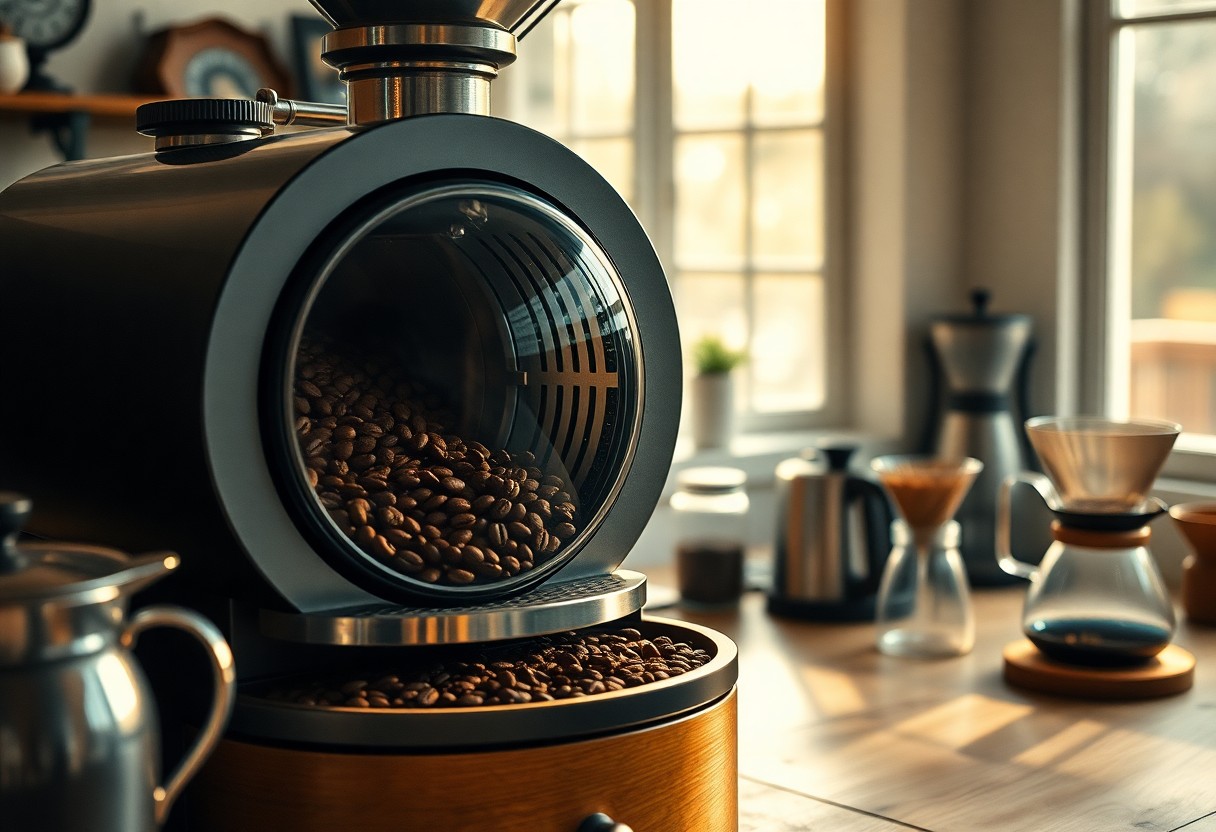
The Price Spectrum: Finding Value in Your Investment
Your coffee roasting machine needs to fit your budget while delivering the quality you expect. Prices can range from under $100 for basic home roasting machines to over $1,500 for high-end models that offer unparalleled precision. It’s wise to evaluate what features you genuinely need and how the equipment will impact your overall coffee experience. The right choice balances quality with your financial comfort, ensuring you enjoy every cup without overspending.
Budget Roasters vs. Premium Choices
Budget roasters often provide a decent introduction to home roasting, with simple designs and user-friendly interfaces. For instance, machines like the FreshRoast SR540 start at around $200, making them accessible for beginners. However, premium choices, such as the Behmor 2000AB, offer advanced features—like customizable roasting profiles and larger capacities—that elevate your coffee-making experience. Investing in a premium roaster means enhanced consistency and greater control over your coffee’s flavor profile.
Long-term Costs of Ownership: What to Expect
Owning a coffee roasting machine comes with ongoing costs beyond the initial purchase. You’ll need to factor in expenses such as green coffee beans, maintenance, replacement parts, and electricity. Green beans typically cost between $5 to $7 per pound, which can vary depending on your sourcing preferences. Additionally, regular cleaning and occasional repairs will ensure consistent performance and longevity, so budgeting a few hundred dollars over a few years for upkeep is advisable. Calculating these costs helps you understand your total investment in brewing excellence.
As you dive deeper into the world of home roasting, prepare for costs associated with trying various coffee beans. Experimenting with single-origin beans might cost you more upfront but can offer vibrant flavors worth exploring. The initial investment in equipment will pay off over time through the ability to craft your unique roasts at a fraction of the price of specialty coffee. You may also find your equipment lasting for years with proper care, significantly decreasing your long-term per-cup cost. Overall, consider your roasting journey as both an investment in your culinary adventures and a long-term source of joy in your daily routine.
User Experience: From Novice to Home Barista
The journey from being a novice to a confident home barista can be highly rewarding and filled with experimentation. As you explore your coffee roasting machine, you’ll discover the fine balance between time and temperature that unlocks diverse flavor profiles. This exploration not only enhances your skills but also deepens your appreciation for the nuances within each batch of coffee. You’ll find that each roast is a unique creation, allowing your personal preferences to shine through and elevate your daily rituals.
Learning Curves: How to Master Your Machine
Mastering your coffee roasting machine involves a steep but enjoyable learning curve. You’ll begin by understanding the various settings and functions, enabling you to tweak your roast levels based on desired flavor outcomes. Experiment with different bean varieties and roast profiles, taking notes of each batch for optimal future adjustments. As you refine your technique, you may even develop a signature roast that becomes your go-to favorite.
Community Resources and Support Systems
Engaging with a vibrant community can significantly enhance your home roasting experience. Online forums, social media groups, and local coffee meetups provide platforms for sharing insights, troubleshooting issues, and discovering new techniques from seasoned roasters. These networks offer a treasure trove of knowledge, including tips for equipment maintenance and bean sourcing, fueling your progress and inspiring creativity in your coffee journey.
Joining coffee roasting communities connects you with fellow enthusiasts who are eager to share their expertise and support your growth. Resources such as online courses, workshops, and video tutorials expand your understanding of coffee chemistry and roasting techniques. Many forums also feature troubleshooting advice, helping you fix potential problems early on. By participating in these groups, you immerse yourself in a culture of learning, pushing each other to refine your skills and explore innovative ideas, ultimately making your coffee journey more enjoyable and fulfilling.
Trends in Home Coffee Roasting Technology
As home coffee roasting becomes increasingly popular, innovation in roasting technology is rapidly evolving. Emerging trends highlight a shift towards more efficient, user-friendly, and precise machines, allowing you to unlock the full potential of your coffee beans. Machines now incorporate enhanced features like automatic profiles, temperature controls, and real-time monitoring to help you achieve your desired roast profile with ease, giving you creative control and access to café-quality coffee at home.
Innovations Shaping the Future of Roasting
Recent developments in materials and designs have led to better heat distribution, contributing to a more even roast. For example, advancements in drum technology improve airflow, which not only enhances consistency but also reduces roast time. Additionally, user interfaces are becoming more intuitive, with some machines providing educational content on roasting techniques directly through their displays.
The Rise of Smart Roasters and Connectivity
Smart roasters are taking the home coffee roasting experience to the next level by integrating connectivity features. These devices allow you to customize and monitor your roast remotely via smartphone apps, where you can access roasting profiles, adjust settings in real time, and even receive alerts when your coffee is ready. This not only enhances convenience but also encourages experimentation, helping you refine your skills as a home barista.
The trend towards smart roasting devices showcases a significant shift in how you interact with your coffee maker. For instance, popular brands are now offering models equipped with Wi-Fi or Bluetooth connectivity, allowing you to sync your machine with IoT platforms. Some even feature built-in tutorials and community sharing options, enabling you to learn from coffee enthusiasts worldwide and explore diverse roasting styles. This technological leap transforms the traditional roasting process, making it interactive and more accessible than ever.
To wrap up
With this in mind, selecting the best coffee roasting machine for your home hinges on understanding your personal preferences and roasting goals. You should consider factors such as capacity, roasting method, and ease of use. Whether you opt for a drum roaster or an air roaster, investing in quality equipment will enhance your coffee experience. Pay attention to features like temperature control and chaff collection, as they can significantly impact your results. Ultimately, the right machine will empower you to craft coffee that perfectly suits your taste. Enjoy the journey of home roasting!
FAQ
Q: What should I look for in a home coffee roasting machine?
A: When identifying a home coffee roasting machine, consider the following features: capacity, type of roaster (air or drum), temperature control, and ease of use. Capacity indicates how much coffee you can roast at once, typically ranging from 1 to 2 pounds. Air roasters allow for quicker roasting and can highlight brightness in coffee, while drum roasters provide consistency and control over the roast profile. Temperature control enables you to adjust the roast based on the flavor profile you prefer. Lastly, ease of use is important for both beginners and experienced roasters, so look for machines with user-friendly interfaces and clear instructions.
Q: How does the roasting process affect the flavor of the coffee?
A: The roasting process significantly impacts the flavor, aroma, and body of coffee. During roasting, coffee beans undergo various chemical changes. The Maillard reaction, caramelization, and the development of aromatic compounds all contribute to the final flavor profile. Lighter roasts tend to preserve more of the beans’ original characteristics, showcasing acidity and fruitiness, while darker roasts emphasize the caramel and chocolate notes, often resulting in a fuller body and reduced acidity. As the process requires careful monitoring, varying roasting times and temperatures will yield distinct flavors, allowing roasters to experiment and find their preferred taste.
Q: How frequently should I roast coffee beans at home?
A: The frequency of roasting coffee beans at home depends on personal preferences, consumption habits, and storage methods. Ideally, roasted coffee is best consumed within 2-14 days to ensure optimal flavor and freshness. If you drink coffee daily, consider roasting once a week or every few days, depending on your consumption rate. For best results, store roasted beans in an airtight container in a cool, dark place to extend their shelf life. It’s also imperative to experiment and find the balance between freshness and convenience that works for you.
Q: What types of coffee beans can I roast at home?
A: You can roast a variety of coffee beans at home, including Arabica, Robusta, and specialty blends. Arabica beans are known for their smooth, nuanced flavors, while Robusta beans deliver a stronger, more bitter taste and are often used in espresso blends. Specialty coffee offers unique flavor profiles that can be enhanced through roasting. It’s worth trying different bean origins and processing methods to find your favorite flavors. Be sure to source high-quality green beans for the best roasting results, as their quality will directly impact the flavor of your brewed coffee.
Q: What are the differences between air roasters and drum roasters?
A: Air roasters and drum roasters have distinct mechanisms that affect the roasting process. Air roasters use hot air to roast the beans quickly, capable of achieving a light roast with pronounced acidity and brightness. They typically offer a shorter roast time and are easier to clean. Drum roasters, on the other hand, use a rotating drum to evenly distribute heat, resulting in consistent roasts and the ability to develop deeper flavors. Drum roasting usually takes longer but offers better control over temperature and airflow, making them preferred for those looking to achieve specific roast profiles. Ultimately, the choice between the two depends on your roasting style and Desired flavors.

